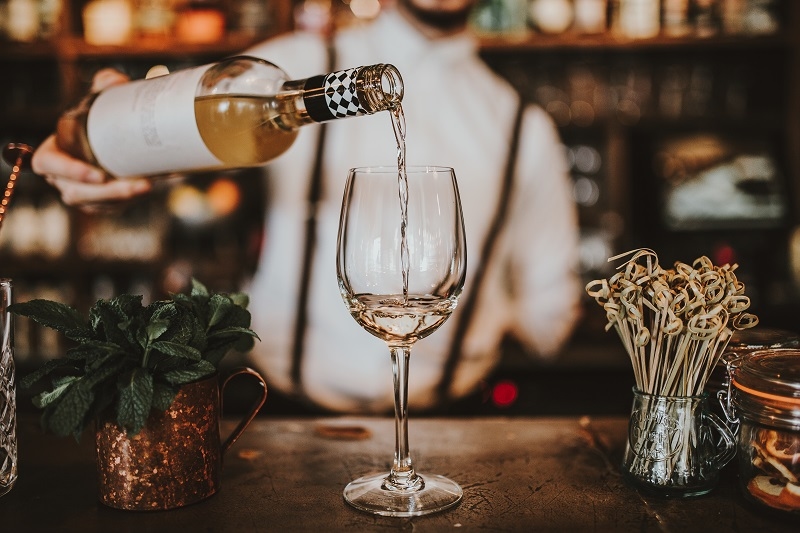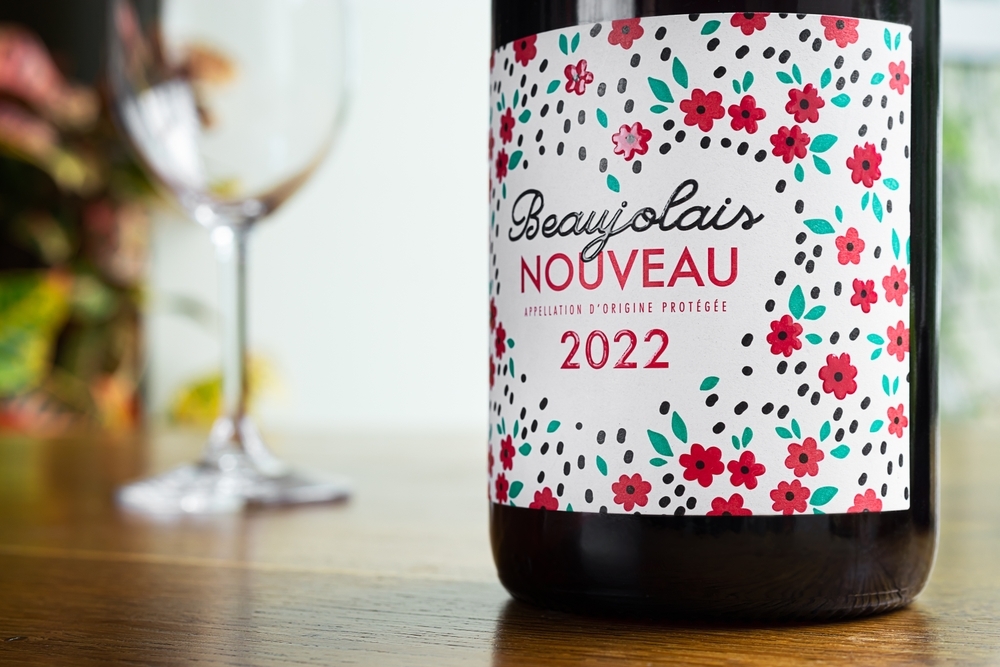Explore Richness of Tempranillo Wine: Spain’s Gift To World

Often called the backbone of Spanish red wines, Tempranillo has long been revered for its versatility, elegance, and capability to express the varied terroirs of Spain. From the elegant and structured wines of La Rioja to the full-bodied and expressive styles of Ribera del Duero, Tempranillo continues to entice wine lovers around the world. Be it a seasoned expert or someone entirely new to wine, Tempranillo shall lead you through a myriad of flavors and traditions and the art of winemaking in a most memorable fashion.
What is Tempranillo Wine?
Tempranillo is a red grape variety intimately bound to Spain's viticulture. The name itself hints at one of its most salient features: it ripens earlier than most other red grape varieties in Spain. Early ripening really suits the blistering hot summers and various growing circumstances found in Spain.
Tempranillo has grown and developed with Spanish winemaking lore since at least the 9th century. It thrives mostly in Rioja, Ribera del Duero, Toro, and Navarra, but its sphere of influence is expanding into the New World-Argentina, California, and Australia.
Wines made from Tempranillo are incredibly diverse. Varying from young, fresh, and fruit-forward expressions to highly structured masterpieces aged in oak capable of graceful decades of aging, the grape's relatively neutral profile allows it to imbibe and reflect the terroir wherever it grows, along with the personality of the grower, thereby being an ambassador of terroir.
These days, Tempranillo's reputation extends not just to a single-varietal wine but also as an integral player in many famous blends, particularly in Rioja, where it frequently partners with Garnacha (Grenache), Graciano, and Mazuelo (Carignan).
Taste of Tempranillo
When you pour a glass of Tempranillo, a complex but approachable nose welcomes you for a multi-faceted tasting experience. How Tempranillo is grown and aged can produce huge flavor variety, yet there are some common threads among most expressions.
On the fruity side, Tempranillo is generally by red fruit tones like cherry, plum, and strawberry. In its younger styles, these fruits are vibrant and juicy. As the wine ages, these fruity notes tend to make way for dried fig, prune, and sometimes stewed tomato flavors, bringing an earthy, savory trait.
Check This Out: Learn Reasons How Climate Affects the Taste of Wine Grapes
Earth and Spice
One of the hallmarks of Tempranillo is its earthy undertone. It's not uncommon to detect hints of leather, tobacco, dusty earth, and herbs. These rustic flavors provide depth and complexity, making the wine feel grounded and authentic.
Oak Influence
Tempranillo is often aged in oak barrels, which imparts additional flavors such as vanilla, coconut, clove, and cedar. Spanish winemakers particularly love using American oak, which lends a distinctive sweet spice note to many aged Tempranillos.
Structure
In terms of structure, Tempranillo wines are usually medium- to full-bodied, with moderate to high tannins and balanced acidity. This structure makes them extremely versatile for food pairing and aging potential.
Best Tempranillo Wines to Try

1. Marqués de Riscal Reserva Rioja
Marqués de Riscal is only about $25, and its style embodies Rioja: With polished layers of red berries, vanilla, and vaguely tobacco-inflected aromas, silky tannins, and a long, pleasing finish, it is a benchmark for lovers of traditional Rioja. With elegance created from the gorgeous marriage of fruit and oak, this wine shows Tempranillo at its best.
2. Vega Sicilia Único Ribera del Duero
Not an easy task to define this wine; indeed Vega Sicilia Único is formidable, elegant, and at times a long-living frenemy. Flavors detected in this full-bodied wine include black cherry, leather, tobacco, and earthy minerals, and the wine does evolve beautifully in the bottle for decades. Price: $300+ A hard-to-find gem, showcasing a lot of what Tempranillo is capable of when cared for patiently.
3. La Rioja Alta Gran Reserva 904
Around $70 Gran Reserva 904 from La Rioja Alta is a masterpiece of old-age Rioja. It exhibits layers of dried cherries, sweet spices, cedarwood, and a hint of balsamic. Silky smooth and well balanced, it shows a wine for the ages with the potential for aging Tempranillo.
4. Bodegas Muga Reserva
Muga's Reserva, around $35, demonstrates a modern approach to Tempranillo while still respecting the traditions of the past. It is polished but never imposing, filled with ripe red and black fruit, vanilla, and smoke. An excellent value, Muga's Reserva will please in casual and special occasions alike.
5. Torremoron Tempranillo
Around $15 Then comes Torremoron for people who are looking for a cheap introduction to Tempranillo with pure fruit flavor and a touch of minerality. Juicy and approachable, yet simple, this is ideal for casual sipping and weekday dinners.
Learn More: Explore The Enchanting History Behind Wine Regions Of Spain
Tips to Consume Tempranillo Wines
1. Serve at the Right Temperature
Tempranillo prefers to be served slightly below room temperature, which means 60 to 65° F: 15 to 18° C. If it is served warmer than that, the alcohol may triumph over the fruit and spicy notes; any cooler than 60 degrees may blunt its aromas and structure.
2. Decant Aged Tempranillo
A wine's Reserva or Gran Reserva status often calls for decanting. Breathing for thirty to sixty minutes helps unravel its deeper layers of aroma and flavor, thus producing a more complex and satisfying experience.
3. Glassware
For Tempranillo, a large, tulip-shaped glass, like a Bordeaux glass, is best. The broad bowl allows the wine to breathe properly, thus enhancing its aroma and softening its tannins.
4. Identifying Where The Wines Are Aged
Spanish wines usually carry one of four designations: Joven, Crianza, Reserva, or Gran Reserva. These designations refer to the amount of time the wine spent in the aging process.
- Joven: fresh and fruity, intended for early consumption.
- Crianza: aged at least two years, with six months minimum in oak.
- Reserva: minimum three years of aging, with one year in oak.
- Gran Reserva: minimum of five years old, with two years in oak.
5. Think of Provocative Pairings
The natural balance of sour fruitiness against the slightly more pronounced acidity and powerful tannins gives Tempranillo an added advantage: it is a wine that allows a good deal of freedom in food pairing. Chose wise, and the meal can take the experience to new heights.
Food Pairings with Spanish Wine Tempranillo

1. Jamón Ibérico
Few things in the culinary world go as beautifully with Tempranillo as Jamón Ibérico. The beverage's acidity cuts through the ham's richness of fat, while the savoury notes unite with the cured flavours. This is a pure Spanish classic.
2. Grilled Lamb Chops
Charred and brimming with gaminess, grilled lamb matches beautifully with the earthy and fruity aspects of Tempranillo. Aged Tempranillos, with their complex notes of leather and spice, are especially exquisite with lamb seasoned with rosemary and garlic.
Also Read: Discover The Delight in the Magic of Spain Wine Region
3. Paella with Chorizo
While many wines may be challenged to match spicy fare, Tempranillo's bold fruit and moderate tannins embrace the smoky spice from the chorizo. Throw in the rich saffron rice, and you have a culinary marriage made in heaven.
4. Aged Manchego Cheese
Tempranillo's savoury, nutty, and slightly herbal characteristics contrast and complement Spain's famous dry sheep cheese. This simple pairing of Manchego, olives, and almonds makes an elegant appetizer next to a luscious glass of Tempranillo.
5. Stuffed Bell Peppers
Stuffed with ground meat, rice, and tomatoes, stuffed bell peppers pick up on the tomato and red fruit notes in Tempranillo. The wine's high acidity also balances the richness of the stuffing, creating a perfect match.
Conclusion
Tempranillo truly is a glimpse into the heart and soul of Spain. Because of this rustic yet polished nature, fruity yet savory, young yet worthy of aging, it becomes a must-have experience for any true lover of fine wine. Whether you encounter it in its new and sprightly form as a Joven or harness all the majesty of a Gran Reserva, Tempranillo is rich in reward for such varied experience.
This content was created by AI
No keywords available
-1717753922-r.jpg)


